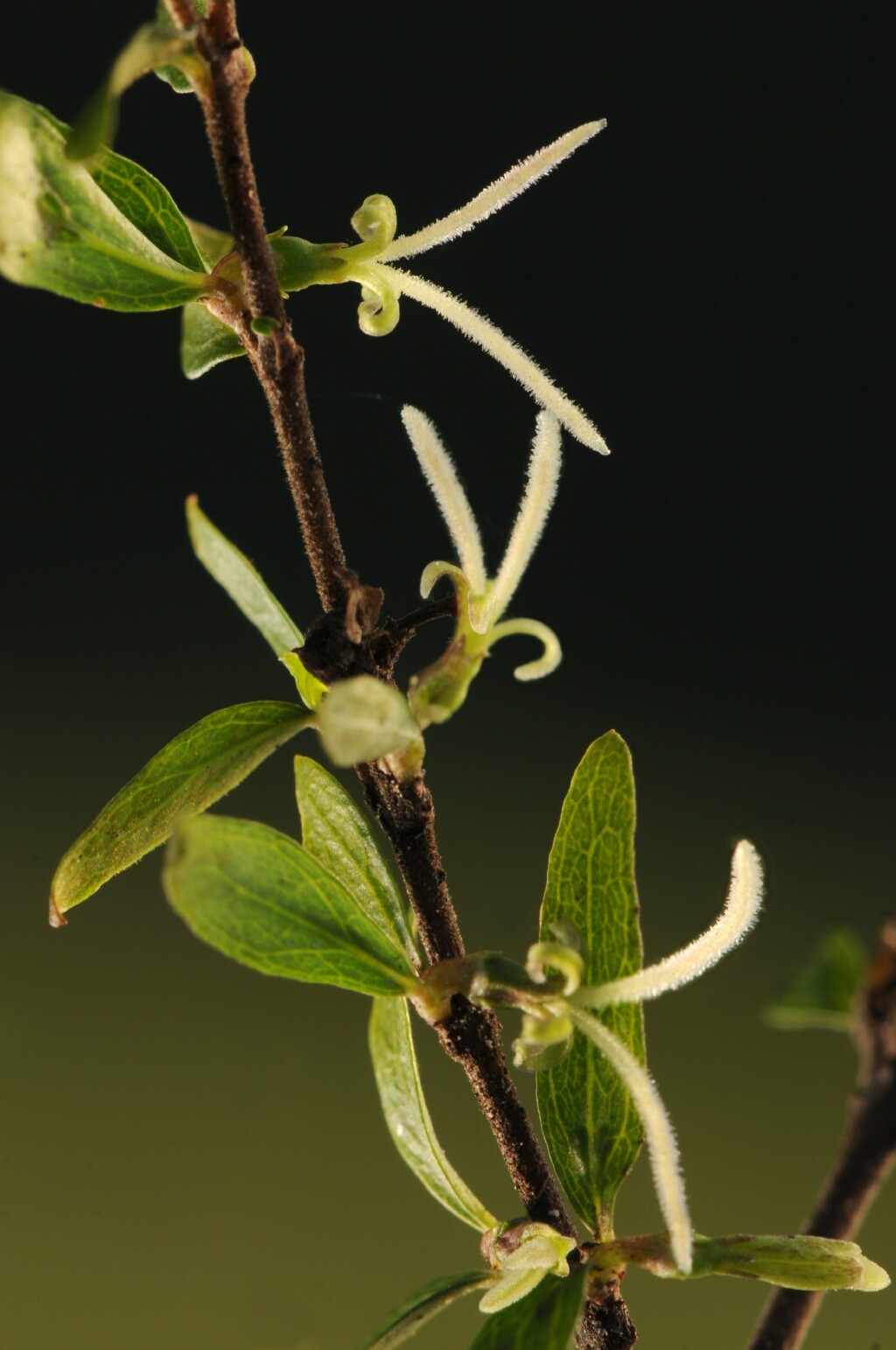Coprosma quadrifida
(Labill.) B.L.Rob. Prickly Currant-bushErect, often intricate shrub 2–5 m high; branches slender, often spinescent, pubescent at least when young. Leaves c. crowded, variable, lanceolate to broad-ovate, mostly 5–15 mm long and 2–5 mm wide, dull, glabrous, thin-textured, conspicuously reticulate veined beneath, obtuse to subacute, margins flat or slightly recurved; petiole to c. 1.5 mm long; stipules rounded, cuspidate, pubescent. Flowers subsessile, unisexual, solitary, terminal on short branchlets. Male flowers with cup-like calyx; corolla funnel-shaped, c. 3 mm long, lobes longer than tube. Female flowers with deeply toothed calyx; corolla tubular, 3–4 mm long, lobes longer than tube, recurved; style usually 2-branched. Drupe ellipsoid to subglobose, 5–8 mm long, crowned by persistent calyx, glossy, orange to reddish. Flowers Aug.–Jan.
Wim, GleP, VVP, VRiv, GipP, OtP, WaP, Gold, CVU, GGr, DunT, NIS, EGL, EGU, WPro, HSF, HNF, OtR, Strz, MonT, HFE, VAlp. Also NSW, ACT, Tas. Widespread and often locally common in moist open-forests, riparian scrubs, fern gullies and rainforest. .
Jeanes, J.A. (1999). Rubiaceae. In: Walsh, N.G.; Entwisle, T.J., Flora of Victoria Vol. 4, Cornaceae to Asteraceae, pp. 616–642. Inkata Press, Melbourne.
 Spinning
Spinning

